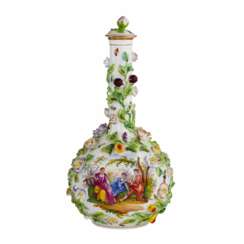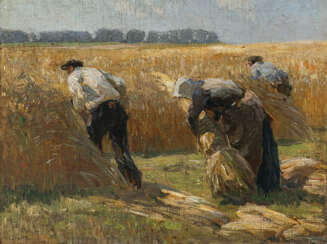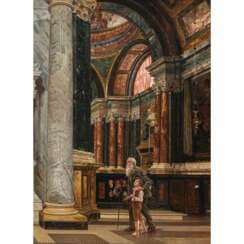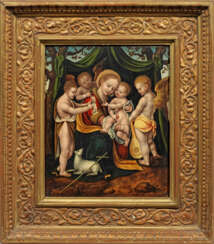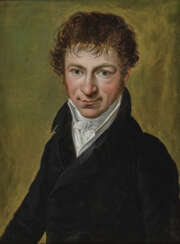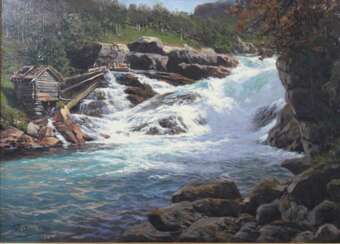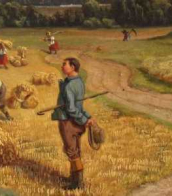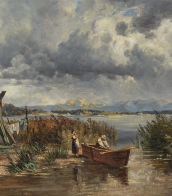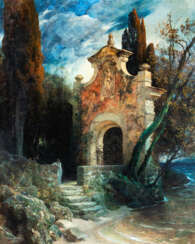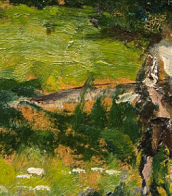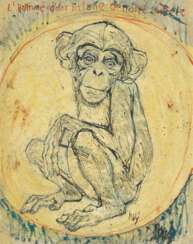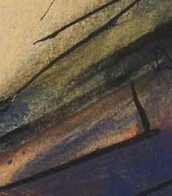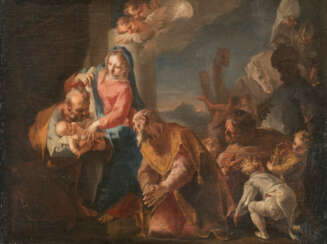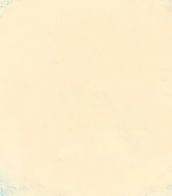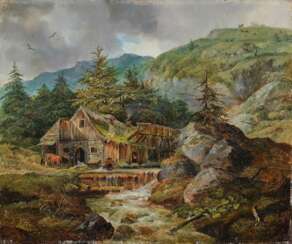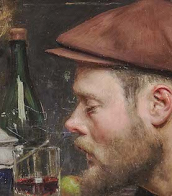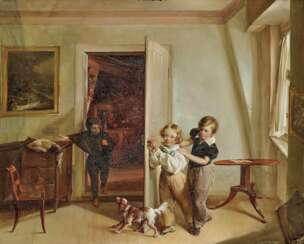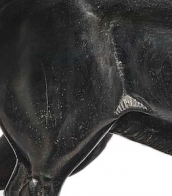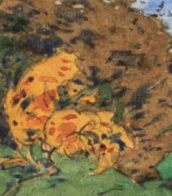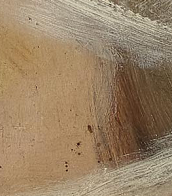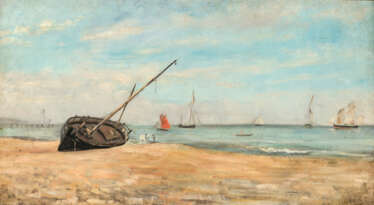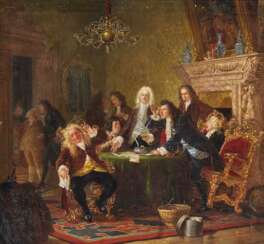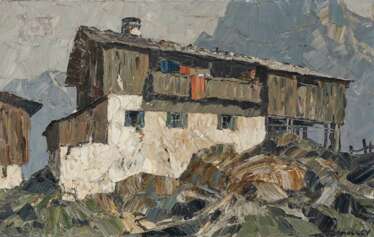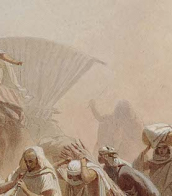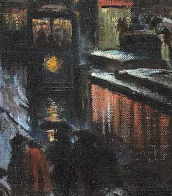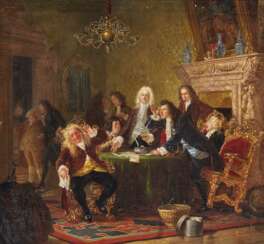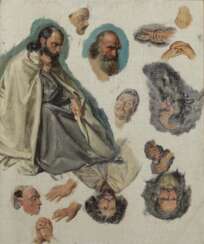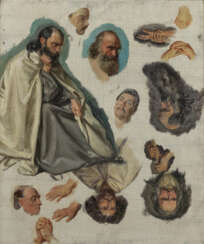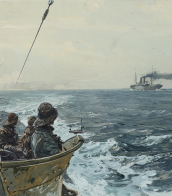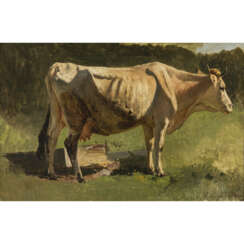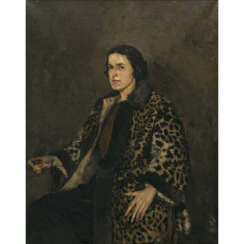peintures 19e - 20e siècle
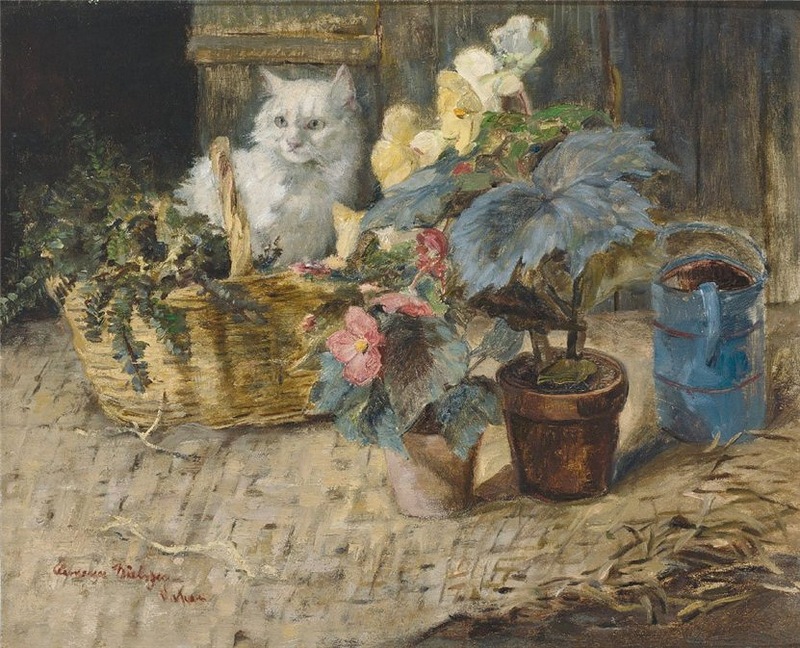
Clementine Nielssen was an Austrian animal painter.
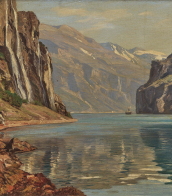
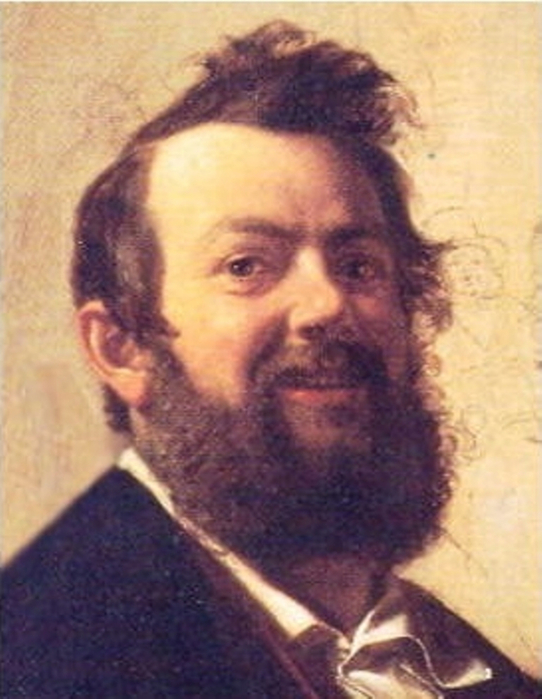
Johann Peter Hasenclever was a German painter of the first half of the 19th century. He is known as a painter, a representative of the Düsseldorf school of art, who is considered one of the founders of German genre painting.
Hasenclever began his work by interpreting biblical, mythological and romantic subjects, but eventually found his calling in humorous scenes from bourgeois life, especially Pyrenean towns and cities. Among his famous works are "The Amusing Examination," "The Reading Room," and "The Trial of Wine," distributed in engravings and lithographs.
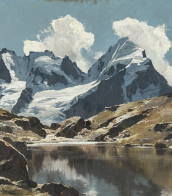
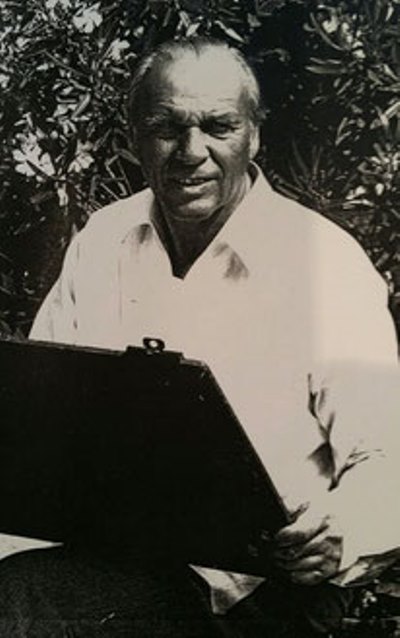
August Lüdecke-Cleve was a German animal and landscape painter.
August studied at the Düsseldorf and Munich Academies of Fine Arts. He painted mainly peaceful Rhine landscapes, often with grazing herds.
August Lüdecke-Cleve was a member of the Laetitia art group in Düsseldorf, the Munich Artists' Cooperative and the Munich Allotria Artists' Society.
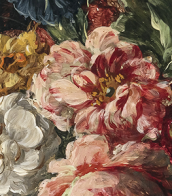
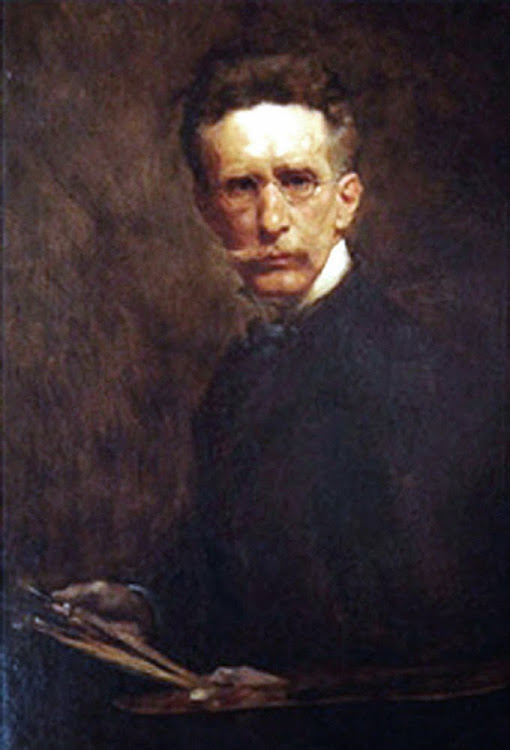
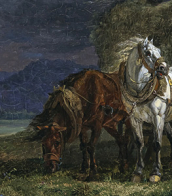
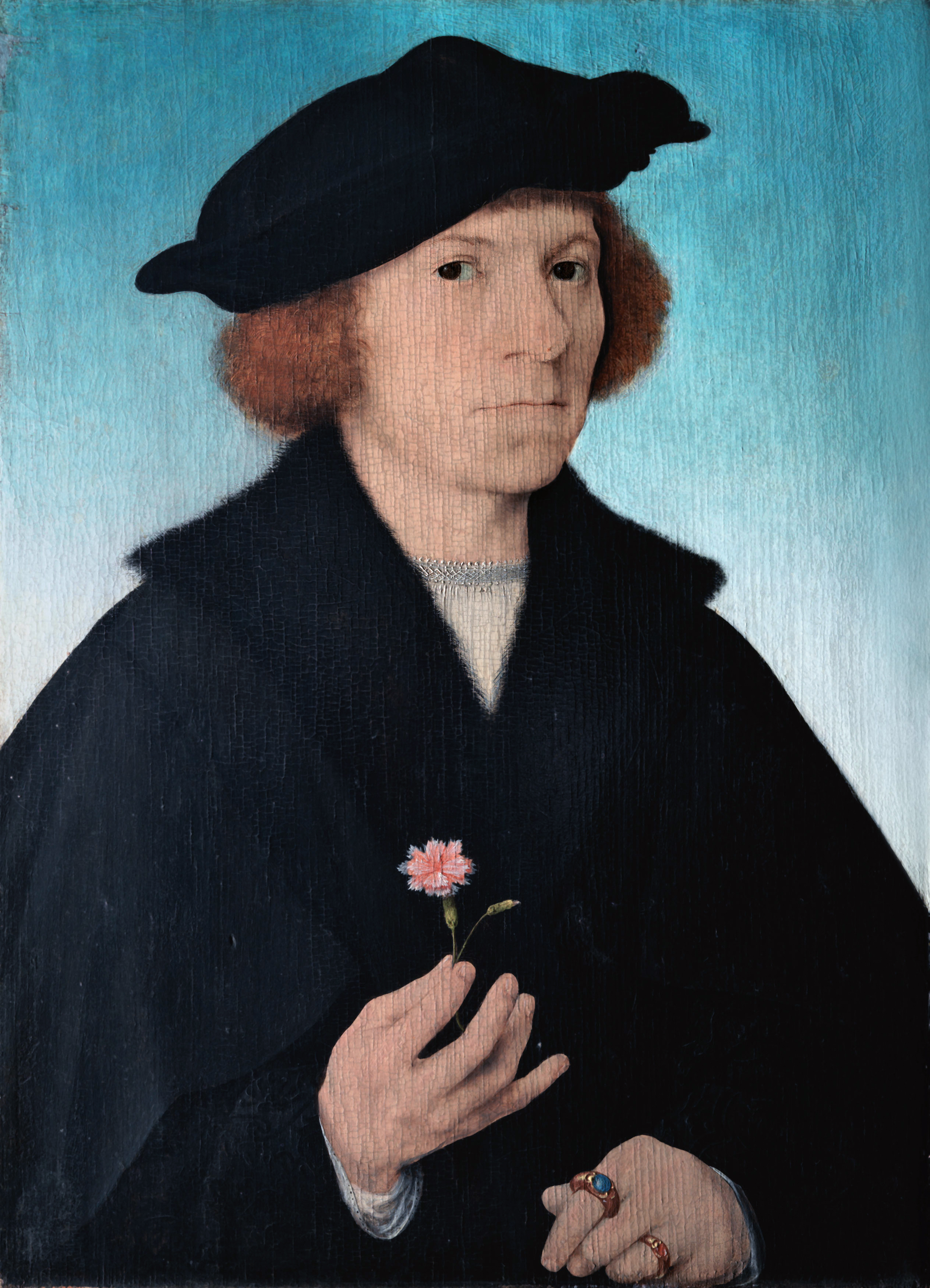
Joos van Cleve, also known by his real name Joos van der Beke, was a prominent Netherlandish painter, active mainly in Antwerp from about 1511 until his death in 1540 or 1541. His work predominantly centered around religious subjects and portraits, including notable commissions for the French King Francis I during his time at the French court. His artistic oeuvre reflects a blend of traditional Netherlandish painting techniques with contemporary Renaissance styles, showcasing his direct knowledge of local art combined with an awareness of Italian developments.
Van Cleve's work was characterized by its elaborate detail, particularly in his altarpieces which often incorporated portraits and landscapes, demonstrating his refined painting style. His success in Antwerp was significant, and he was also recognized at the French court, indicating his high regard as a portrait artist. Notably, Van Cleve had the opportunity to paint members of the royal court, including King Francis I and Queen Eleanor of Austria, underscoring his skills in portraiture.
His paintings are recognized for their sensitivity to color and a unique solidity of figures, with some works showcasing the popular style of Antwerp Mannerism. Van Cleve was an innovator in introducing broad world landscapes in the backgrounds of his paintings, a technique that became popular in sixteenth-century northern Renaissance paintings. Despite his contributions to the Renaissance art movement, Van Cleve also produced works that were highly eclectic, drawing on the styles of earlier Netherlandish masters as well as Italian influences, particularly in his use of sfumato, evident in his Virgin and Child compositions.
For art collectors and experts, Joos van Cleve's legacy offers a rich exploration into the transition from medieval to Renaissance art in Northern Europe. His body of work, found in prestigious collections such as the National Gallery in Prague, the Louvre, and the Royal Museums of Fine Arts of Belgium, remains a testament to his versatility and skill as a painter of both religious narratives and royal portraits.
To delve deeper into the fascinating world of Joos van Cleve and to stay informed about exhibitions or sales featuring his work, consider signing up for updates from art institutions and auction houses. This subscription will ensure you remain at the forefront of developments and opportunities related to this influential artist's oeuvre, enhancing your collection and understanding of Renaissance art.
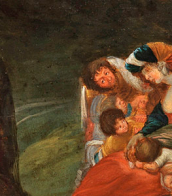
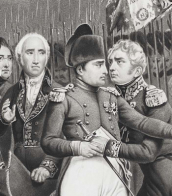
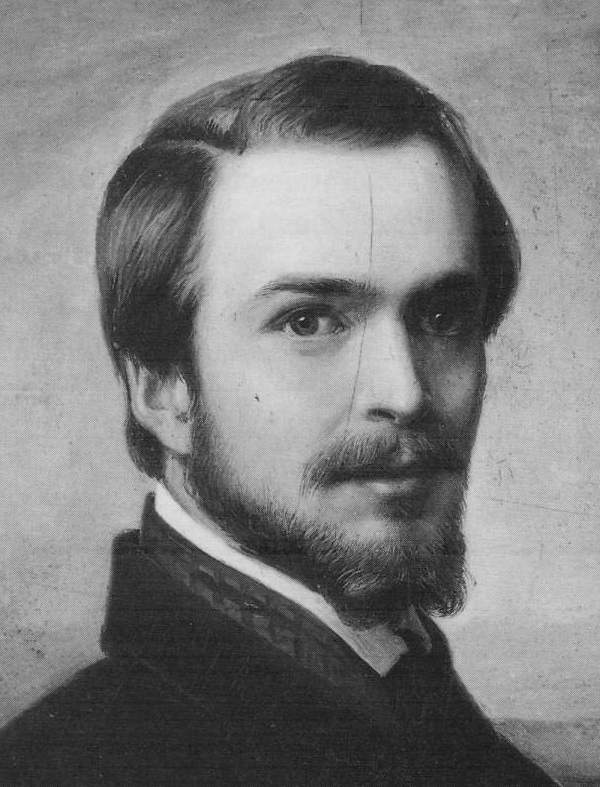
Johannes Christian Deiker is a German painter. He is mainly known for his hunting motifs. His father Christian Friedrich Deiker was a portrait painter and his younger brother Carl Friedrich an animalist.
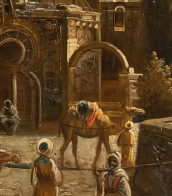
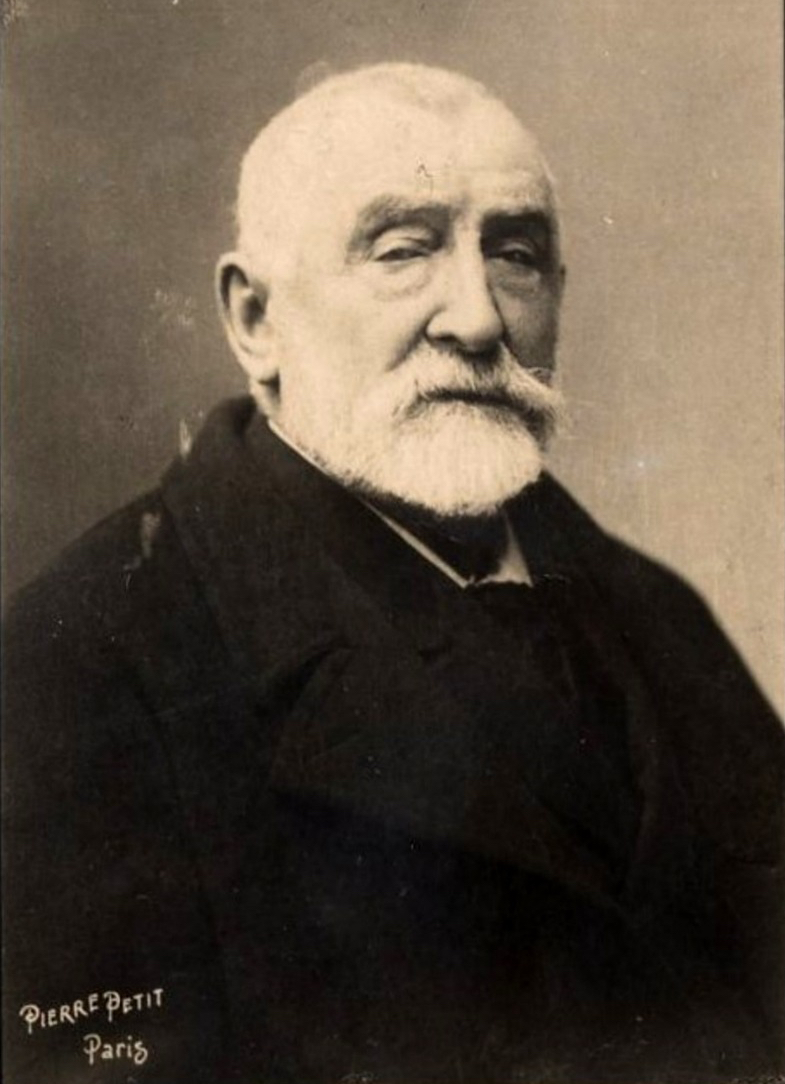
Henri Joseph Harpignies was a French landscape painter of the Barbizon school.

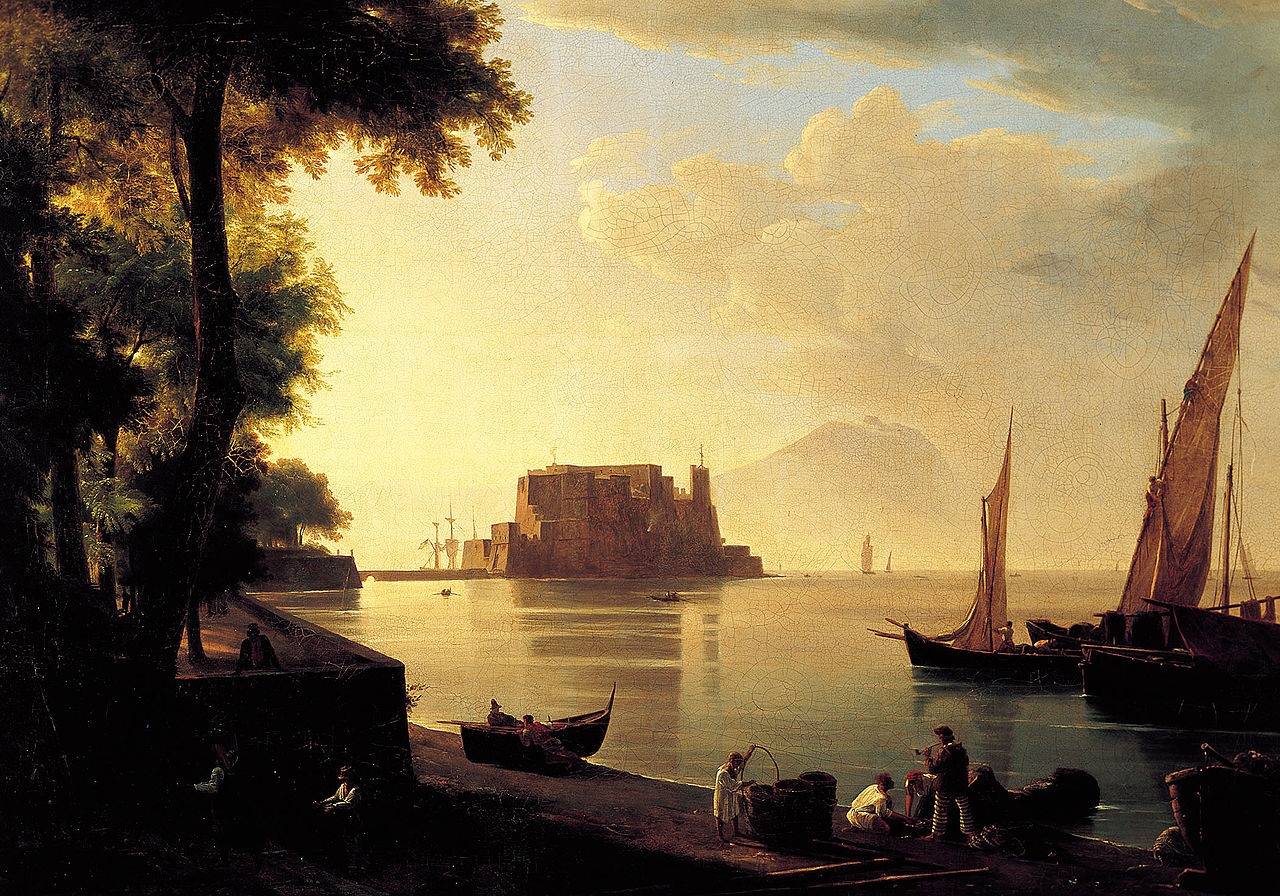
Antonie or Anton Sminck Pitloo was a Dutch painter. His surname was originally Pitlo, but he added the extra "o" because he was often mistaken for an Italian while resident in Italy. In Italian he is also known as Antonio van Pitloo.
He was considered a leading exponent of the "Posillipo School" of painting, named to the area where he lived in Naples. His paintings have been compared to precursors of Impressionism, some sixty years before this was invented.
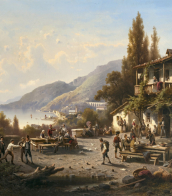
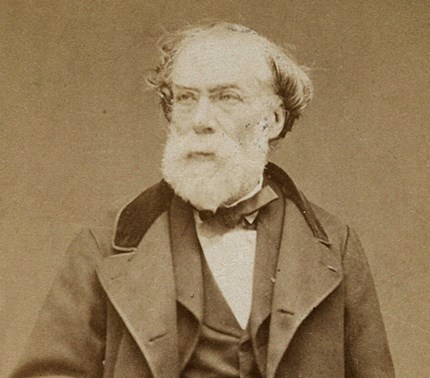
Paul Huet was a French painter and printmaker who has been called the forerunner of Impressionism. Huet's works in oils and watercolors, etchings and lithographs are romantic in nature.
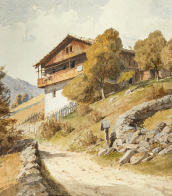
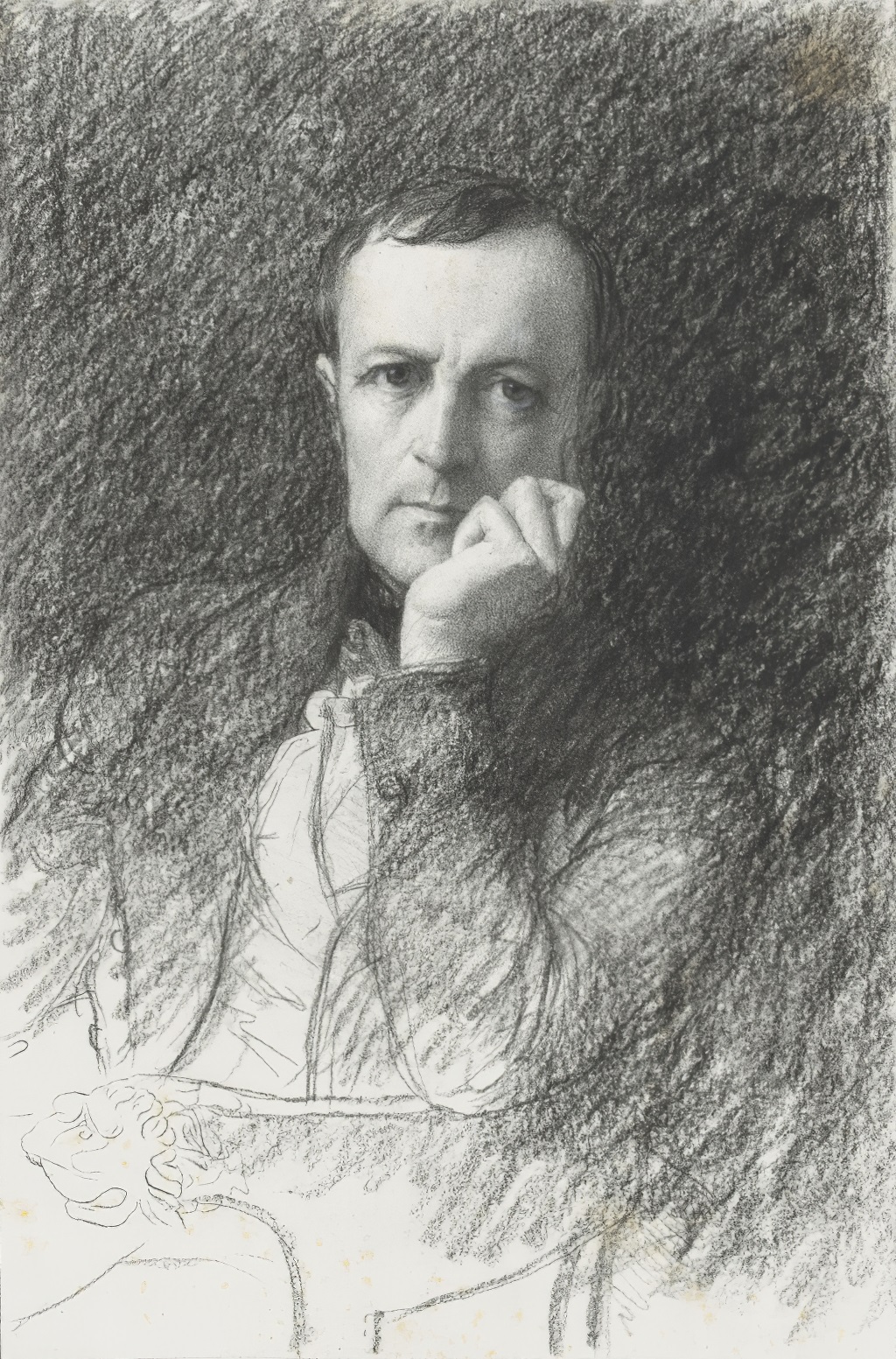
Paul Delaroche was renowned for his meticulously detailed historical scenes that captured both the essence and drama of bygone eras. Delaroche's work bridged the Neoclassical and Romantic movements, bringing to life figures and moments from both English and French history with a narrative intensity that resonated across Europe.
Paul Delaroche's education under the influential history painters Antoine-Jean Gros and Watelet instilled in him a profound understanding of historical accuracy and dramatic composition. His debut at the Paris Salon in 1822 marked the beginning of a highly successful career in which he received widespread acclaim, particularly for his poignant portrayal of "The Execution of Lady Jane Grey" in 1834, a piece that remains one of his most celebrated works.
Throughout his career, Paul Delaroche was committed to the educational aspect of art. In 1833, he became a professor at the École des Beaux-Arts in Paris, influencing a generation of artists with his emphasis on historical fidelity and narrative depth. His major works, like the grand mural "The Hemicycle," which he completed between 1837 and 1841, showcased his talent for orchestrating large-scale compositions that featured an array of historical figures.
Paul Delaroche's approach to history painting was characterized by a "philosophical analysis" of events, aiming to link historical truth with the nineteenth-century understanding of time and morality. His attention to detail and the emotional gravity of his subjects helped forge a visceral connection with viewers, making his works a staple in both public exhibitions and private collections.
For collectors and enthusiasts wishing to delve deeper into Delaroche's legacy or view his works, ongoing exhibitions and collections can be accessed through various art galleries and museums worldwide. To stay informed about such events and opportunities, consider signing up for updates focused on Paul Delaroche's works and their exhibition schedules.
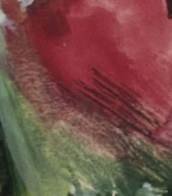

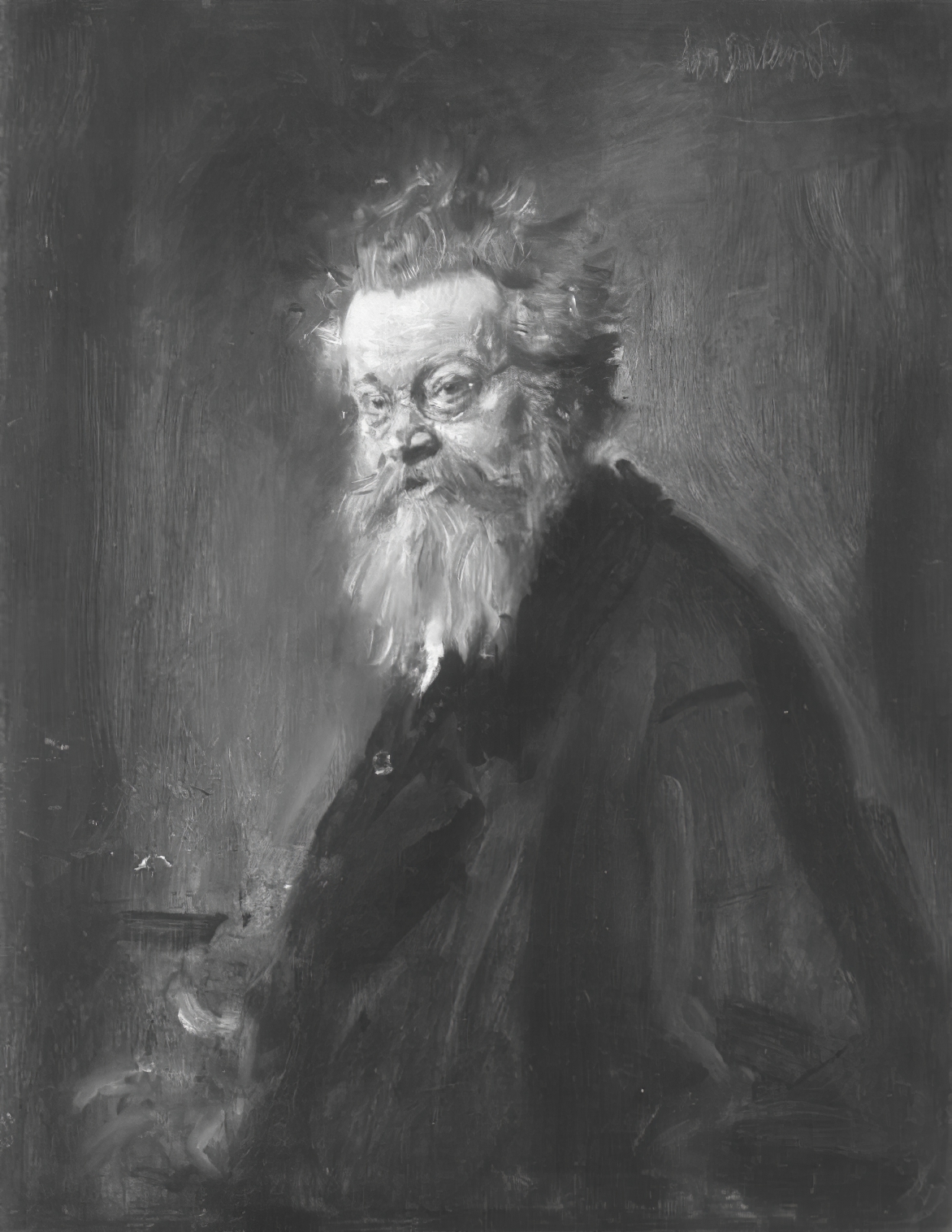
Joseph Wenglein was a German painter who is often referred to as one of the last significant landscape painters of the 19th century Munich school.
Parallel to his law studies Joseph Wenglein studied at the Academy of Fine Arts in Munich. He then switched entirely to art and became a pupil of the landscape painter Johann Gottfried Steffan. On his recommendation, Wenglein sometime later became a pupil of the painter Adolf Heinrich Lier, whose colouristic tendencies, calculated to express profound moods, particularly appealed to him.
Josef Wenglein knew how to reproduce the change of daylight, especially in spring and autumn, with a fine sense of the slightest atmospheric fluctuations and to vary the grey pleasant tone of the Bavarian plateau in all its nuances masterfully.
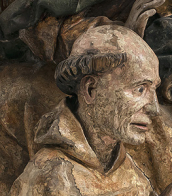
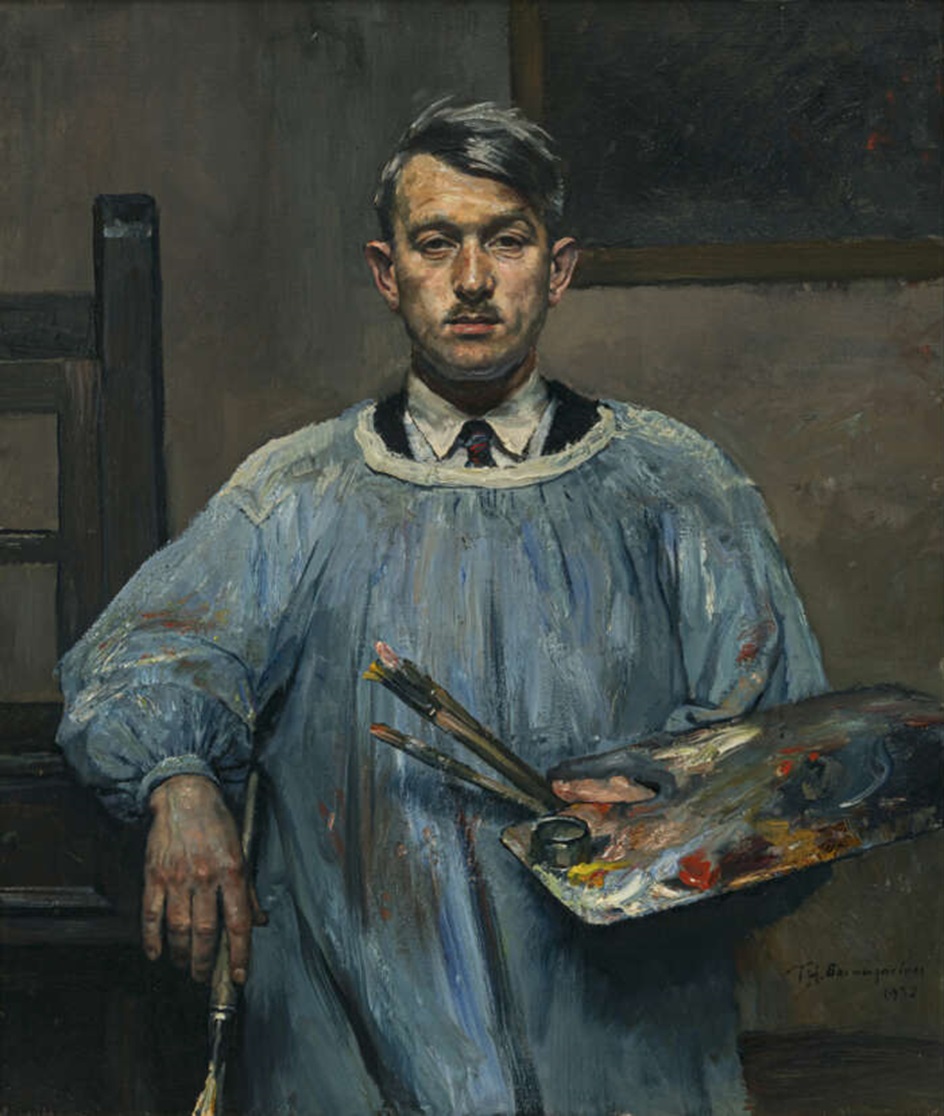
Thomas Baumgartner was a German painter, recognized for his evocative portrayals of rural life. Born in Munich in 1892, he was celebrated for his detailed and vibrant depictions of Bavarian customs and countryside, earning him a place among notable 20th-century German painters.
After training at the Munich Academy and various travels in Europe, Baumgartner established himself with a distinctive style that blended traditional Bavarian influences with his unique artistic vision. His works often featured robust, earthy scenes of peasant life, which not only showcased his technical skill but also conveyed a deep affection for his homeland's landscapes and customs.
Throughout his career, Baumgartner's paintings were widely exhibited and appreciated, particularly for their craftsmanship and the way they captured the essence of rural Germany. His art is a testament to the cultural heritage of Bavaria, resonating with those who value the preservation of regional histories and lifestyles.
Baumgartner's legacy is preserved in art collections and has been featured in major exhibitions, often commanding attention in both national and international art circles. His dedication to depicting the simplicity and beauty of peasant life helps keep the rural traditions of Germany alive in the collective memory of the art world.
For those interested in exploring the serene beauty of traditional German art, Thomas Baumgartner's works offer a timeless journey into the heart of Bavaria's countryside and culture.
To stay updated on upcoming sales and auctions featuring the works of Thomas Baumgartner, consider signing up for our newsletter. This subscription will keep you informed about new opportunities to acquire pieces from this remarkable artist's legacy.

